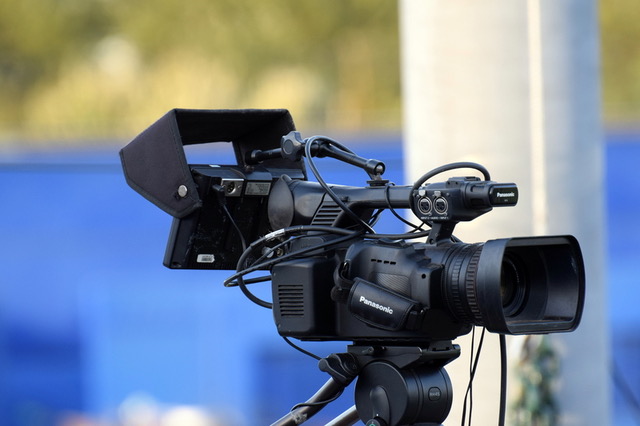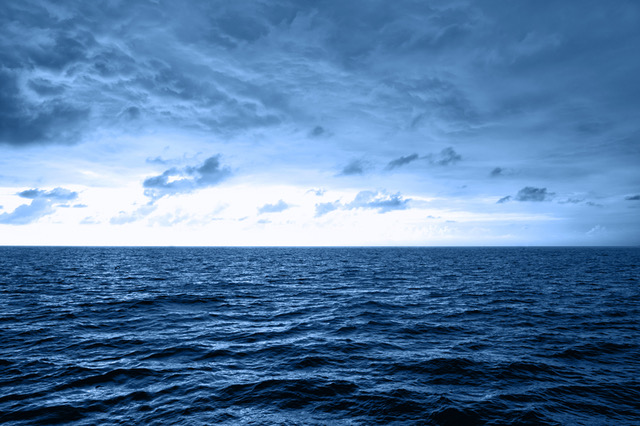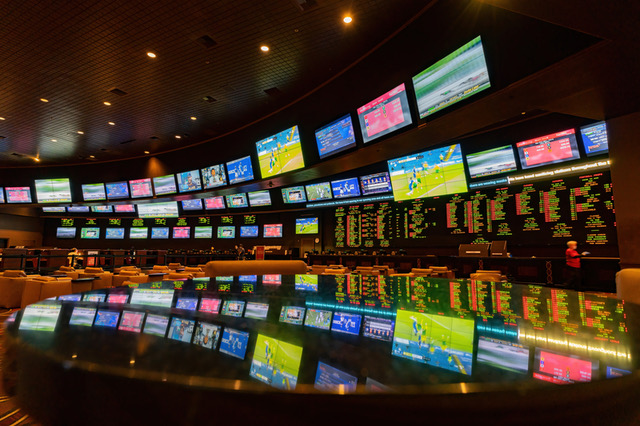
-
 'Humiliated': Combs's ex Cassie gives searing testimony of abuse
'Humiliated': Combs's ex Cassie gives searing testimony of abuse
-
Latin America mourns world's 'poorest president' Mujica, dead at 89

-
 Masters champion McIlroy to headline Australian Open
Masters champion McIlroy to headline Australian Open
-
Sean Combs's ex Cassie says he coerced her into 'disgusting' sex ordeals

-
 McIlroy, Scheffler and Schauffele together for rainy PGA battle
McIlroy, Scheffler and Schauffele together for rainy PGA battle
-
Uruguay's Mujica, world's 'poorest president,' dies aged 89

-
 Lift-off at Eurovision as first qualifiers revealed
Lift-off at Eurovision as first qualifiers revealed
-
Forest striker Awoniyi placed in induced coma after surgery: reports

-
 'Kramer vs Kramer' director Robert Benton dies: representative
'Kramer vs Kramer' director Robert Benton dies: representative
-
Tatum suffered ruptured right Achilles in playoff defeat: Celtics

-
 US stocks mostly rise on better inflation data while dollar retreats
US stocks mostly rise on better inflation data while dollar retreats
-
Winning farewell for Orlando Pirates' Spanish coach Riveiro

-
 Lift-off at Eurovision as first semi-final takes flight
Lift-off at Eurovision as first semi-final takes flight
-
UN relief chief urges action 'to prevent genocide' in Gaza

-
 Baseball pariahs Rose, Jackson eligible for Hall of Fame after league ruling
Baseball pariahs Rose, Jackson eligible for Hall of Fame after league ruling
-
Scheffler excited for 1-2-3 group with McIlroy, Schauffele

-
 Sean Combs's ex Cassie says he forced her into 'disgusting' sex ordeals
Sean Combs's ex Cassie says he forced her into 'disgusting' sex ordeals
-
Uruguay's 'poorest president' Mujica dies aged 89

-
 Senior UN official urges action 'to prevent genocide' in Gaza
Senior UN official urges action 'to prevent genocide' in Gaza
-
'Kramer vs Kramer' director Robert Benton dies: report

-
 Sinner moves through gears to reach Italian Open quarters
Sinner moves through gears to reach Italian Open quarters
-
Massages, chefs and trainers: Airbnb adds in-home services

-
 Republicans eye key votes on Trump tax cuts mega-bill
Republicans eye key votes on Trump tax cuts mega-bill
-
Brazil legend Marta returns for Japan friendlies

-
 McIlroy, Scheffler and Schauffele together to start PGA
McIlroy, Scheffler and Schauffele together to start PGA
-
Jose Mujica: Uruguay's tractor-driving leftist icon

-
 Uruguay's ex-president Mujica dead at 89
Uruguay's ex-president Mujica dead at 89
-
It's showtime at Eurovision as semis begin

-
 DeChambeau says '24 PGA near miss a major confidence boost
DeChambeau says '24 PGA near miss a major confidence boost
-
Gaza, Trump dominate politically charged Cannes Festival opening

-
 Carney says new govt will 'relentlessly' protect Canada sovereignty
Carney says new govt will 'relentlessly' protect Canada sovereignty
-
Gaza rescuers says Israeli strikes kill 28 near hospital

-
 Schauffele still has something to prove after two major wins
Schauffele still has something to prove after two major wins
-
US inflation cooled in April as Trump began tariff rollout

-
 US reverses Biden-era export controls on advanced AI chips
US reverses Biden-era export controls on advanced AI chips
-
Trump, casting himself as peacemaker, to lift Syria sanctions

-
 US Ryder Cup captain Bradley eyes LIV's Koepka, DeChambeau
US Ryder Cup captain Bradley eyes LIV's Koepka, DeChambeau
-
Musetti battles Medvedev and match-point rain delay to reach Rome quarters

-
 Rights groups urge court to halt UK fighter jet supplies to Israel
Rights groups urge court to halt UK fighter jet supplies to Israel
-
Steamy excitement at Eurovision contest

-
 Forest hit back over criticism of owner Marinakis over Nuno clash
Forest hit back over criticism of owner Marinakis over Nuno clash
-
Sean Combs's ex Cassie says he 'controlled' her life with violence

-
 Mali dissolves political parties in blow to junta critics
Mali dissolves political parties in blow to junta critics
-
Blackmore's history-making exploits inspiring to all: de Bromhead

-
 Southern Hills named host of 2032 PGA Championship
Southern Hills named host of 2032 PGA Championship
-
Injury may delay outdoor season start for Norway's Ingebrigtsen

-
 Tour de France to go through Paris' historic Montmartre district
Tour de France to go through Paris' historic Montmartre district
-
'We can't go back': India's border residents fear returning home

-
 Finland returns sacred stool looted by France to Benin
Finland returns sacred stool looted by France to Benin
-
Israel PM says army entering Gaza 'with full force' in coming days


NASA rolls out its mega Moon rocket -- here's what you need to know
NASA's massive new rocket is poised to make its first journey to a launchpad on Thursday ahead of a battery of tests that will clear it to blast off to the Moon this summer.
It will leave the Kennedy Space Center's Vehicle Assembly Building at 5:00 pm Eastern Time (2000 GMT) and begin its glacially slow, 11-hour crawl on a transporter to the hallowed Launch Complex 39B, four miles (6.5 kilometers) away.
Here's what you need to know.
- Huge rocket, huge cost -
With the Orion crew capsule fixed on top, the Space Launch System (SLS) Block 1 stands 322 feet (98 meters) high -- taller than the Statue of Liberty, but a little smaller than the 363 feet Saturn V rockets that powered the Apollo missions to the Moon.
Despite this, it will produce 8.8 million pounds of maximum thrust (39.1 Meganewtons), 15 percent more than the Saturn V, meaning it's expected to be the world's most powerful rocket at the time it begins operating.
"This is a flagship rocket you're about to see, it's a symbol of our country," Tom Whitmeyer, associate administrator for exploration systems development, told reporters on a call this week.
A symbol that comes at an estimated price tag of $4.1 billion per launch for the first four Artemis missions, NASA Inspector General Paul Martin told Congress this month.
Once it reaches the iconic launch pad, where 53 Space Shuttles took off, engineers have roughly two more weeks worth of checks before what's known as the "wet dress rehearsal," the final prelaunch test.
On the morning of April 3, the SLS team will load more than 700,000 gallons (3.2 million liters) of cryogenic propellants into the rocket and practice every phase of launch countdown, cutting off the engines less than ten seconds from blast off.
The propellant will then be drained to demonstrate safely standing down a launch attempt.
- To the Moon and beyond -
NASA is targeting May as the earliest window for Artemis-1, an uncrewed lunar mission that will be the first flight for SLS and Orion.
SLS will first place Orion into a low Earth orbit, then, using its upper stage, perform what's called a trans-lunar injection.
This maneuver is necessary to send Orion 280,000 miles beyond Earth and 40,000 miles beyond the Moon -- further than any spaceship capable of carrying humans has ventured.
On its three-week mission, Orion will deploy 10 shoebox size satellites known as CubeSats to gather information on the deep space environment.
It will journey around the far side of the Moon -- thanks to thrusters provided by the European Space Agency (ESA) service module -- and finally make its way back to Earth, where its heat shield will be tested against the atmosphere.
Splashdown takes place in the Pacific, off the coast of California.
Artemis-2 will be the first crewed test, flying around the Moon but not landing, while Artemis-3, now planned for no earlier than 2025, will see the first woman and first person of color touch down on the lunar south pole.
NASA wants to use the Moon as a proving ground for testing technologies necessary for a Mars mission, sometime in the 2030s, using a Block 2 evolution of the SLS.
- SLS v Starship -
NASA calls SLS a "super heavy lift exploration class vehicle." The only currently operational super heavy rocket is SpaceX's Falcon Heavy, which is smaller.
Elon Musk's company is also developing its own deep space rocket, the fully reusable Starship, which he has said should be ready for an orbital test this year.
Starship would be both bigger and more powerful than SLS: 394 feet tall with 17 million pounds of thrust. It could also be considerably cheaper.
The tycoon has suggested that within years, the cost per launch could be as little as $10 million.
Direct comparisons are complicated by the fact that while SLS is designed to fly direct to its destinations, SpaceX foresees putting a Starship into orbit, then refueling it with another Starship so it can continue its journey, to extend range and payload.
NASA has also contracted a version of Starship as a lunar descent vehicle for Artemis.
D.Kaufman--AMWN